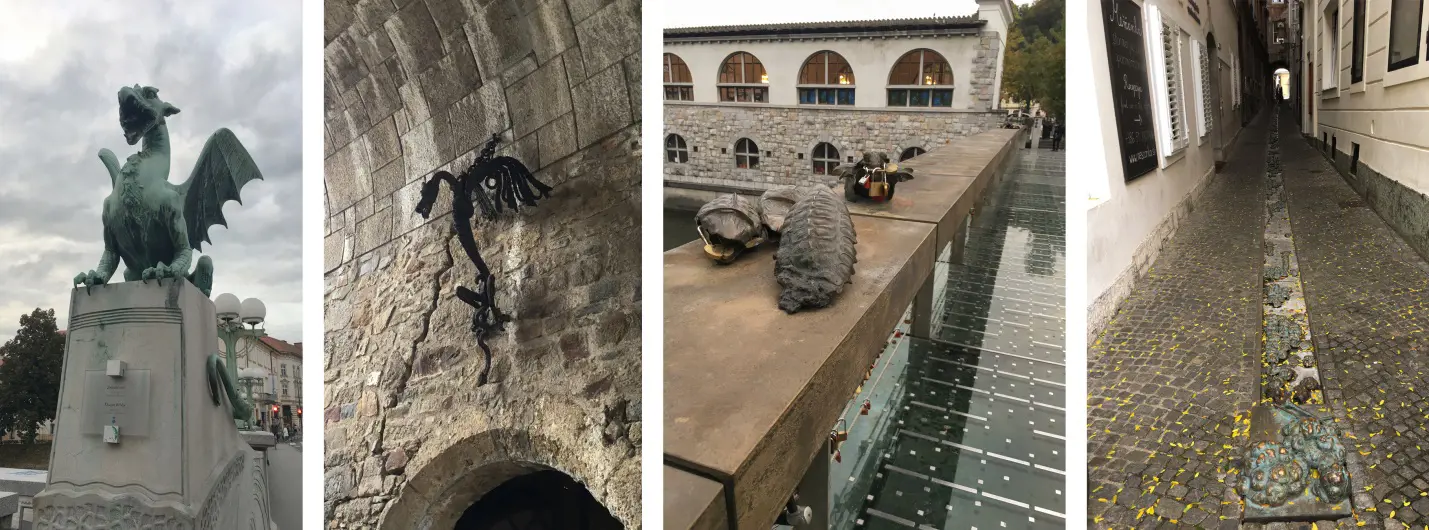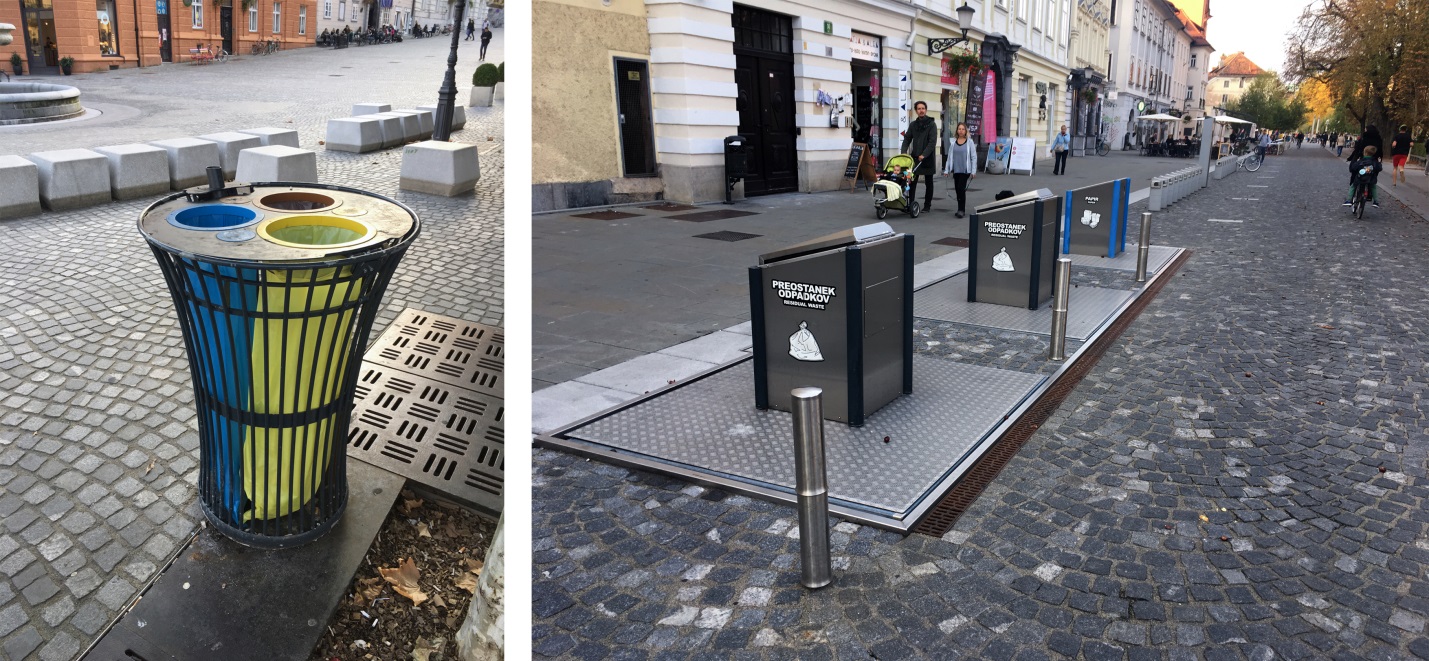First impressions of a city are important. Ljubljana, Slovenia is a treasure; it does not disappoint. The city has a variety of architectural influences, including communist era housing blocks (although few in number); however it is the meticulously detailed and maintained public realm that makes the city distinctive, constantly drawing one’s eye to new areas of interest. European Green Capital of the year, 2016, it is in transition and taking strides towards becoming an exemplar of environmentally friendly strategies and civic initiatives.
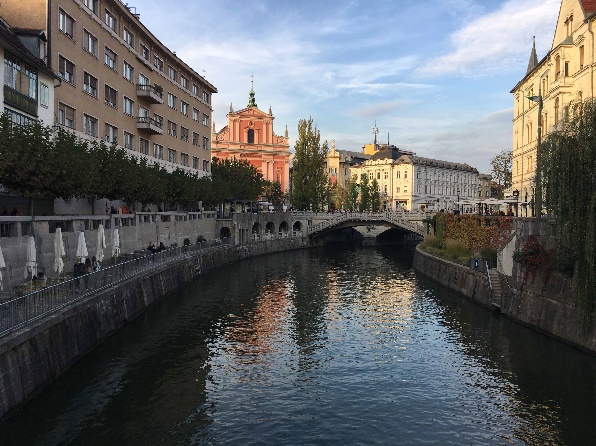
Figure 1: Ljubljanica river with the Joze Plecnik-designed three bridges in background
A little context: Ljubljana is centrally located within Slovenia, on the Ljubljanica river. With Roman origins, the built form of the city has significant Italian, Austrian and German influences. Jože Plečnik (1872-1957) is often credited as the designer with the most influence on the form of the city, with several of its cultural highlights designed by the much-admired architect and planner. However it is the high quality of materials and design generally that make this city distinctive. Design permeates each street and space, a common palette of materials helping to create a coherent whole.
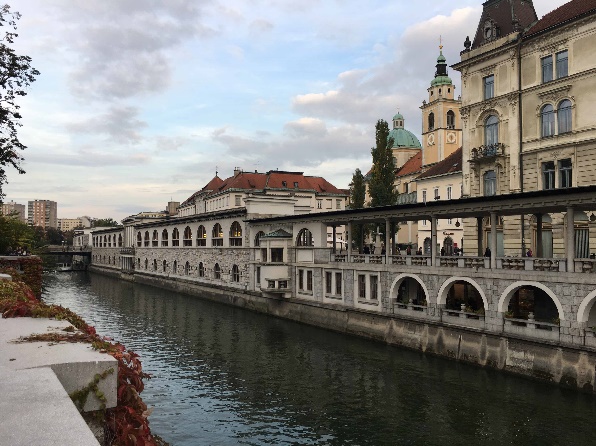
Figure 2: Joze Plecnik-designed riverfront
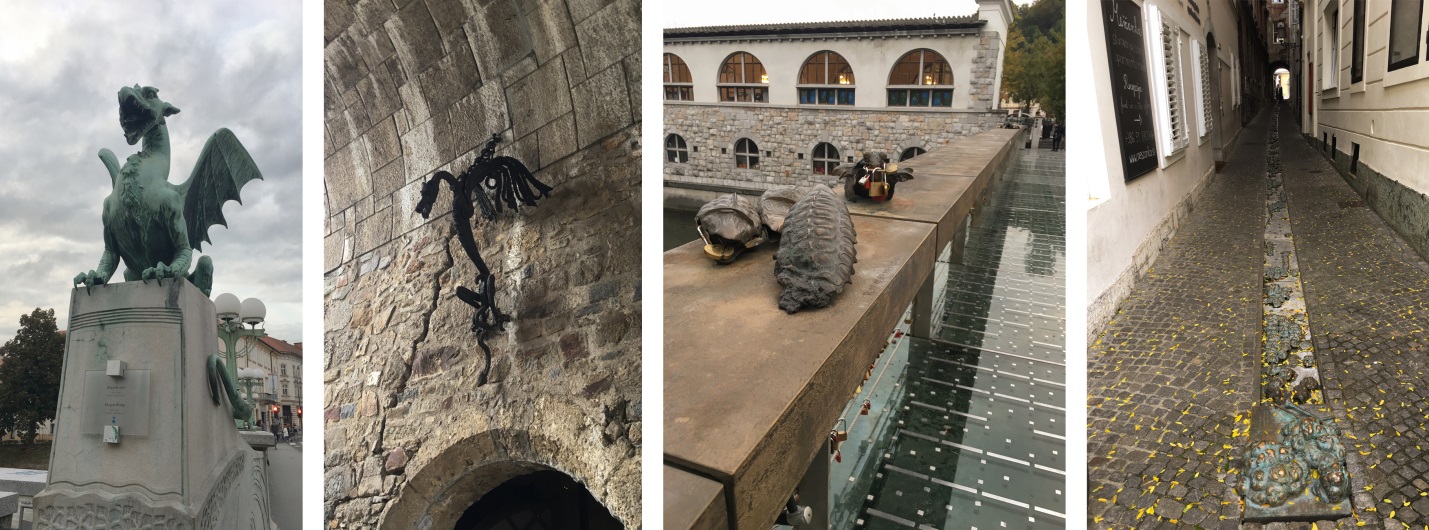
Figure 3: Left to right – (i) Dragon Bridge, (ii) steel dragon on Ljubljana Castle wall, (iii) Mesarski Bridge (art installation) and (iv) water feature integrated within Kljucavnicarska ulica laneway
Approximately 275,000 people call the city their home, which is administered by a typical European municipal system led by a mayor. The current mayor is Zoran Jankovic, who came to power in 2006 and quickly started making significant changes. Responding to chronic traffic issues within a medieval street structure, a sizeable car free zone was established (approximately 10 hectares) within the first year of his four year term. Commercial concerns were quickly allayed, as people and businesses flocked to the calm, yet vibrant pedestrian environment.

Figure 4: Car free zone defined by bollards: collapsible bollards controlled by sensors denoted by white squares
The success of the car free zone has been supported by several complementary measures. Cycleways have been carefully and creatively integrated into the public realm of the city, using materials that complement the streetscape. Unlike other celebrated cycling cities, there aren’t high speed pelotons who can intimidate pedestrians. Bike share schemes are conveniently located within and around the car free zone and are fully integrated with the public transport system of the city.
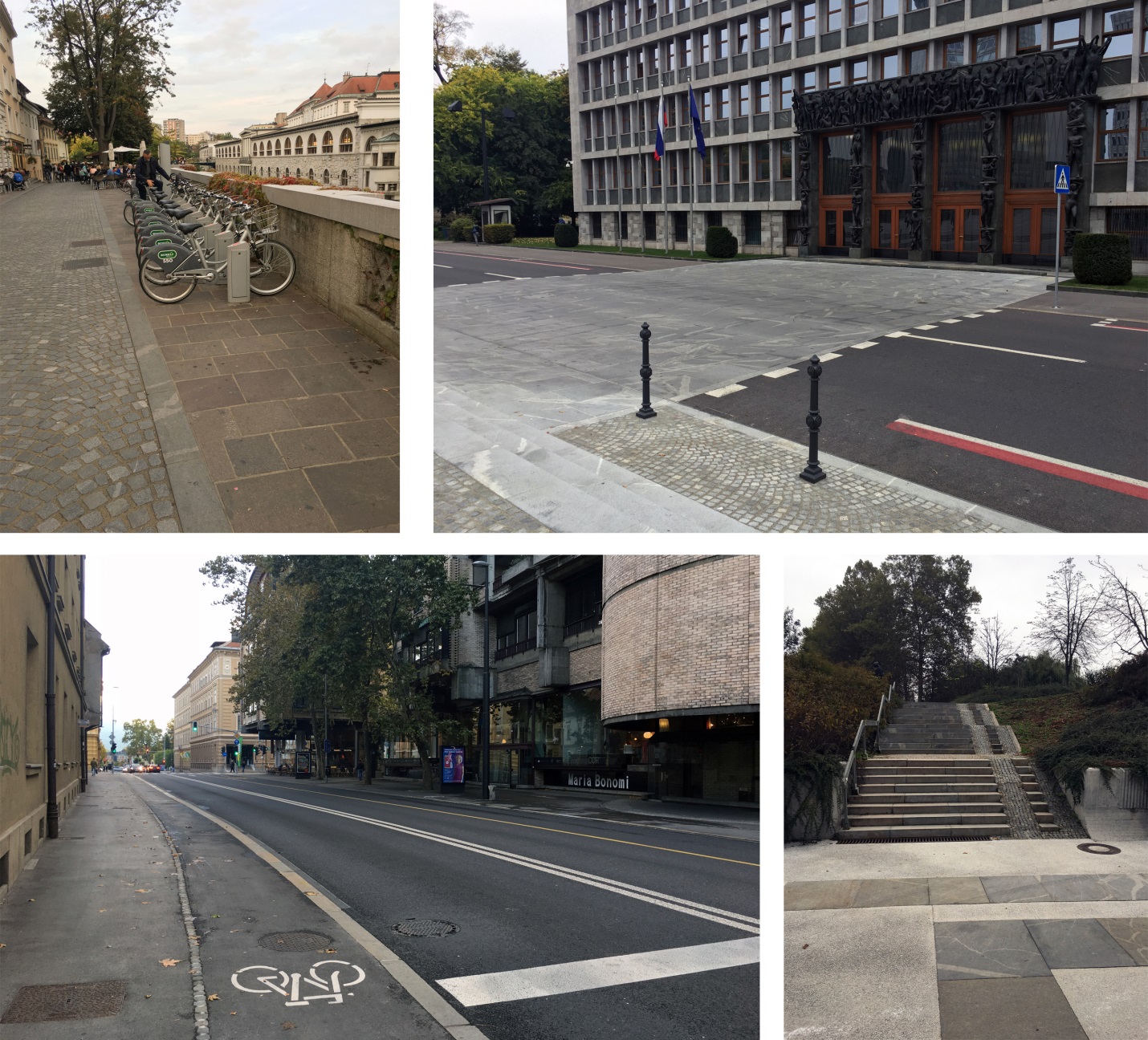
Figure 5: Clockwise from top left – (1) Bicike(lj) bicycle hire station, (2) cycleway defined by simple red line approaching shared surface in front of Slovenian Parliament building, (3) bike access designed into stairs using granite setts and (4) cycleway delineated by flush kerb to carriageway and granite setts to pavement
Park and ride locations have been established on the perimeter of the Zone, to help commuters and a free hail and ride service of electric ‘Kavalirs’ (‘gentle helpers’) have been provided to cater for the elderly or less physically able who might struggle with the 15 minute walk from one side of the Zone to the other. On the theme of accessibility, the city has also provided a contemporary-styled funicular for visitors who don’t fancy the 15 minute hike up to the Roman castle which overlooks the city.

Figure 6: Left to right – (i) Free hail and ride Kavalir – an electric bus within car free zone, (ii) Funicular providing access to Ljubljana castle and (iii) the alternative hiking route up to the Castle
The mantra of ‘Reduce, Reuse, Recycle’ can be seen in action all over the city. One instantly notices the variety of recycling bins provided throughout. The city separates 65% of its waste - exceeding targets set for 2020; its next target is a zero waste strategy by 2025. The city has also adopted underground collection, providing greater capacity for storage and reduced servicing costs.
Figure 7: Left to right – (i) Simple separation of waste within traditional waste bin and (ii) waste bins and underground waste storage
A sense of social engagement and initiative is noticeable whilst exploring the city. The Metalkova district is a haven for alternative cultures within walking distance of the city centre. What began as squatters taking advantage of a derelict military barracks has evolved into a thriving centre of alternative culture that has produced numerous spin-off enterprises. The city has been happy to let this alterative hub scene grow:
It’s a place for critical reflection, civic engagement – and with its activities it is establishing Ljubljana as an area where ideas of all generations can freely flow.
(Zoran Jankovic)[i].
Whilst Metalkova is an easily identifiable example, more subtle bottom up planning initiatives can be seen throughout the city. Groups such as Prostoroz have successfully used crowd-sourced campaigns to demonstrate how stagnant urban sites can be used for urban allotments and social engagement projects such as the Library of Things (think a mixture of a library and Argos).

Figure 8: Metalkova district of Ljubljana
Ljubljana is a city that has been carefully designed and creatively adapted at a variety of scales. Thoughtful consideration can be seen in each intervention - from the strategic level car free zone to the skilful integration of cycle lanes and detailing of the streetscape. The result is a fascinating and vibrant capital city.
[i] https://www.theguardian.com/cities/2015/jul/24/metelkova-ljubljana-abandoned-barracks-europe-squat



